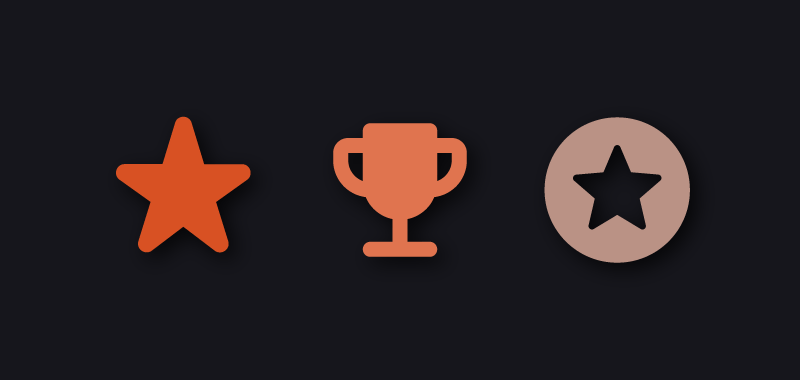
Rewards play a critical role in driving member acquisition, engagement and retention.
People are motivated to join loyalty programs based on the promise of value. Customers will only join if they perceive the rewards to be desirable. More importantly, they will only continue to engage with a program if the rewards continue to be desirable.
The critical importance of rewards
Academic literature emphasises the critical role rewards play in driving member acquisition and engagement with loyalty programs.
Sharma and Verma (2014)[1] hypothesised that members are motivated to join loyalty programs in order to access desirable rewards, therefore ‘the nature of reward offered can influence the outcomes of the loyalty program’.
Mauri (2003)[2] identified that customers become members of a loyalty program if the expected rewards are higher than the expected costs. This was reinforced by Reinares and Garcia-Madariaga (2007)[3] who found that the main cause of non-members’ refusal to join a program was because they perceived the rewards to be inadequate in comparison to the effort required.
Johnson et al (2003)[4] determined that rewards and benefits provide the foundation for the development of switching costs, which create a certain degree of calculative commitment or stickiness in customer relations with the company.
Roem et al (2002)[5] found that the reward that is offered in a loyalty program is important to whether the program succeeds or fails at building brand loyalty.
How to choose the right loyalty program rewards
There are many different types of rewards, all which are better suited to influencing particular behaviours.
For example, tangible rewards (such as a physical product) are more appropriate than intangible (a status tier upgrade) when influencing short-term buying behaviour. But, intangible rewards (such as status or recognition) are more effective in reinforcing relations between the company and the member soon after joining.
Immediate rewards (such as a discount) are better suited to changing short-term behaviour. Whereas deferred rewards (delayed credit or the ability to accumulate a points currency) are better suited to establishing a long-term relationship and stable modification of consumer behaviour.
Efficient rewards are best
Efficient rewards are the ideal reward option because efficient rewards are inexpensive for a company to provide compared to the perceived value by the member, such as a free flight seat upgrade. An inefficient reward costs the company the same amount as the perceived value, such as a cashback.
Certain companies and industries are better positioned to deliver efficient rewards than others. Industries which can deliver them tend to dominate the loyalty industry.
For example, airline and frequent flyer programs can access empty seats on flights and provide them to members in exchange for points, with the cost to the program a fraction of the actual ticket price. Another example of an efficient reward is car rental firms offering members with an unrented car or a car upgrade.
Of course, other industries are not structured in a way which make it easy for companies to deliver efficient rewards. They may have less margin to play with – which in turn may lessen the overall value provided to members. These companies are often required to source rewards from third parties. Monetisation is an alternative approach – this how frequent flyer programs make money.
TIP: When designing a loyalty program, it is a useful exercise to brainstorm what value a company may be able to provide customers at little to no cost – self-funded or supplier-funded.
Questions to ask when choosing the right rewards?
Designing a best practice loyalty program can be complex. Choosing the rewards is only one element, but an important one.
A rewards range should include five characteristics: cash value, choice, aspirational value, relevance, and convenience.
When selecting the right rewards mix, there are several things a loyalty program designer or operator should keep in mind:
- Who are the potential members and what are they motivated by?
- What is the business trying to achieve? Are the objectives of the program transactionally focused, or experiential?
- What value does the company have to offer?
- What resources are in place to supply and fulfill the chosen rewards? Will the rewards be self-funded or supplier-funded?
Companies should keep in mind that perfecting the choice of rewards is about quality, not quantity.
Choosing rewards for success
The success of a loyalty program will come down to the value it provides. Rewards are typically the driver of program value, but companies should also ensure the rewards offered are financially viable. Efficient rewards are best, but are not always attainable.
Many companies choose a rewards mix which provides great value, but the long term financial cost to the business is too high to maintain. This ends in a situation where the program benefits need to stripped back or the program removed entirely. This can lead to a poor experience and backfire for a company, especially if not treated delicately.
It is recommended a company should take the time to obtain the necessary expert knowledge to avoid making reward mistakes. At the end of the day, choosing the right rewards mix is difficult and should be carefully constructed.
[1] Sharma, D. & Verma, V., 2014, ‘Psychological and economic considerations of rewards programs’, Journal of Retailing and Consumer Services, Vol 21, pp924–932.
[2] Mauri, C., 2003, ‘Card loyalty. A new emerging issue in grocery retailing’, Journal of Retailing and Consumer Services, Vol 10, Iss 1, pp13−25.
[3] Reinares, P. & Garcia-Madariaga, J., 2007, ‘The importance of rewards in the management of multisponsor loyalty programmes’, The Journal of Database Marketing & Customer Strategy Management, Vol 15.
[4] Johnson, M. D., Gustafsson, A., Andreassen, T.W., Lervik, L. & Cha, J., 2001, ‘The evolution and future of national customer satisfaction index models’, Journal of Economic Psychology, Vol 22, Iss 2, pp217−245.
[5] Roehm, M., Pullins, E. & Roehm, H., 2002, ‘Designing Loyalty-Building Programs for Packaged Goods Brands’, Journal of Marketing Research – J MARKET RES-CHICAGO, Vol 39, pp202-213.

